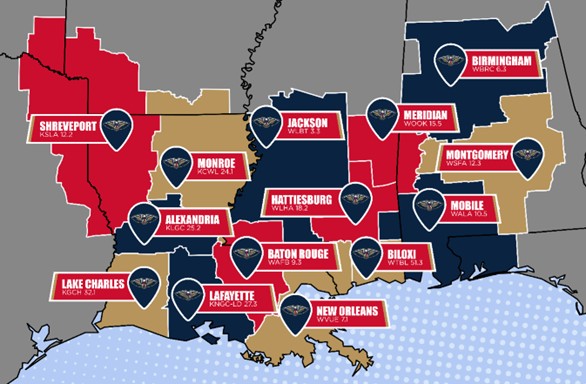Diversity rules proposed
The Minority Media and Telecommunications Council (MMTC), a minority rights organization in the media field, has asked the FCC to impose on cable, satellite and telecommunications companies delivering multichannel programming the same prohibitions against discriminatory advertising practices as the commission has imposed on broadcasters.
Last year, the FCC adopted several diversity initiatives designed to ban race- and gender-based discriminatory practices. One of the new rules prohibits advertising contracts that contain “no urban/no Spanish” clauses through which stations and the advertiser agree not to air the advertiser's ads on stations with formats aimed at certain racial or ethnic audiences.
Last year's rules require broadcasters to certify in their license renewal applications that their advertising contracts do not discriminate on the basis of race or gender and that such contracts contain nondiscrimination clauses. Because the renewal certifications cover broadcasters' previous license terms, stations should already have taken steps to make sure that they will be able to properly certify.
The MMTC has proposed that those same prohibitions be extended to cable, satellite and telecom video systems. According to the group, the FCC should assure “platform neutrality” and “regulatory parity” between and among the various program delivery vehicles. Adopting a uniform approach across platforms may have a jurisdictional basis. Cable and satellite operators all use spectrum licensed by the commission, even if it involves — in the case of cable — merely auxiliary uses.
The proposal thus puts the commission in an uncomfortable position. As is clear from the adoption of the diversity initiatives last year, the commission is inclined to take aggressive steps to weed out discriminatory conduct (even though the precise nature and extent of such conduct has not yet been made a matter of record). Ordinarily, the FCC would be expected to support the MMTC's proposal. But the notion of “platform neutrality” is contrary to the commission's historic regulatory approach, which favors different formulas for different services. It is thus difficult to imagine the FCC embracing it. Moreover, the cable, satellite and telecom operators that would be subject to the proposed regulation would likely resist it strongly. While they may not object in principle to antidiscrimination initiatives, they certainly would object to the potentially broad spectrum of regulatory and paperwork burdens that might flow from “platform neutrality.”
The FCC is under no obligation to act on the MMTC's proposal. However, the idea of promoting diversity and nondiscrimination is likely to appeal to the new FCC administration. The proposal is certainly one to watch.
Tower construction subject to agreement
The professional video industry's #1 source for news, trends and product and tech information. Sign up below.
The FCC recently castigated a broadcaster for not taking into account the requirements of the National Programmatic Agreement (NPA) when it filed an application for authority to construct a new tower. Under the NPA, an applicant must be prepared to demonstrate that it has considered endangered or threatened species, historic properties (by filing a Form 620 with the state historic preservation office) and the impact of construction on Indian tribal areas. NPA issues do not usually come up unless an application is challenged, but meeting NPA standards is nevertheless part of the application process.
Harry C. Martin is a member of Fletcher, Heald and Hildreth, PLC.
Send questions and comments to:harry.martin@penton.com
Dateline
- June 1 is the deadline for TV stations in Michigan and Ohio to file their biennial ownership reports.
- June 1 is the deadline for TV stations and Class A stations in the following states and territories to place their 2009 EEO public file reports in their public files and post them on their Web sites: Arizona, Idaho, Maryland, Michigan, Nevada, New Mexico, Ohio, Utah, Virginia, Washington, D.C., West Virginia and Wyoming. LPTV stations originating programming in these states, which are not required to have public files, must post these reports on their Web sites and keep them in their station records.
- Also on June 1, TV stations (except Class A stations) in Michigan and Ohio, regardless of the number of persons employed at the station, must electronically file an EEO midterm report using FCC Form 397.
